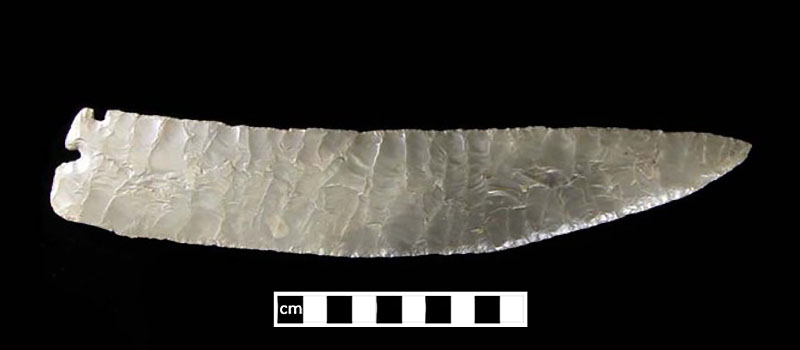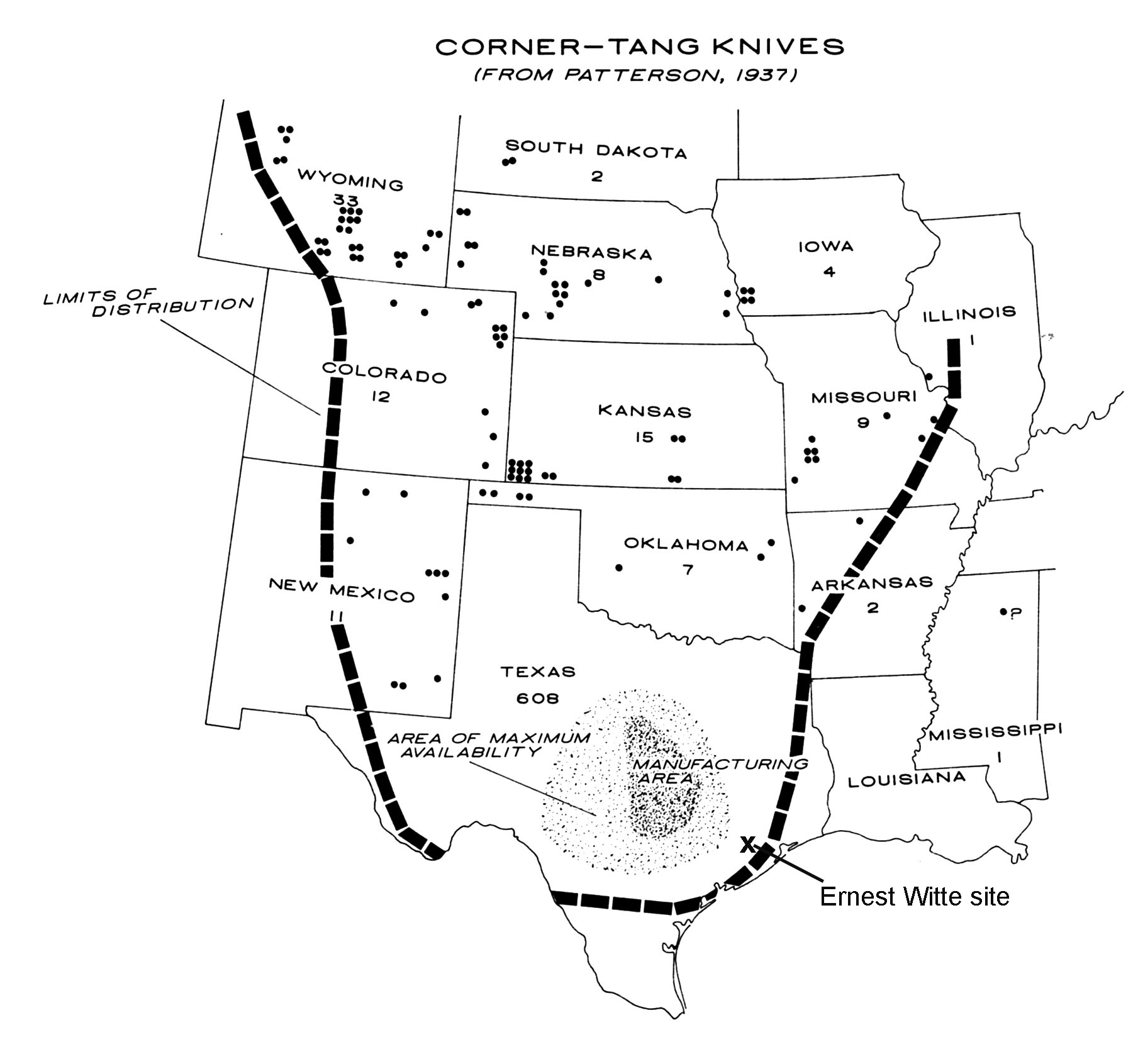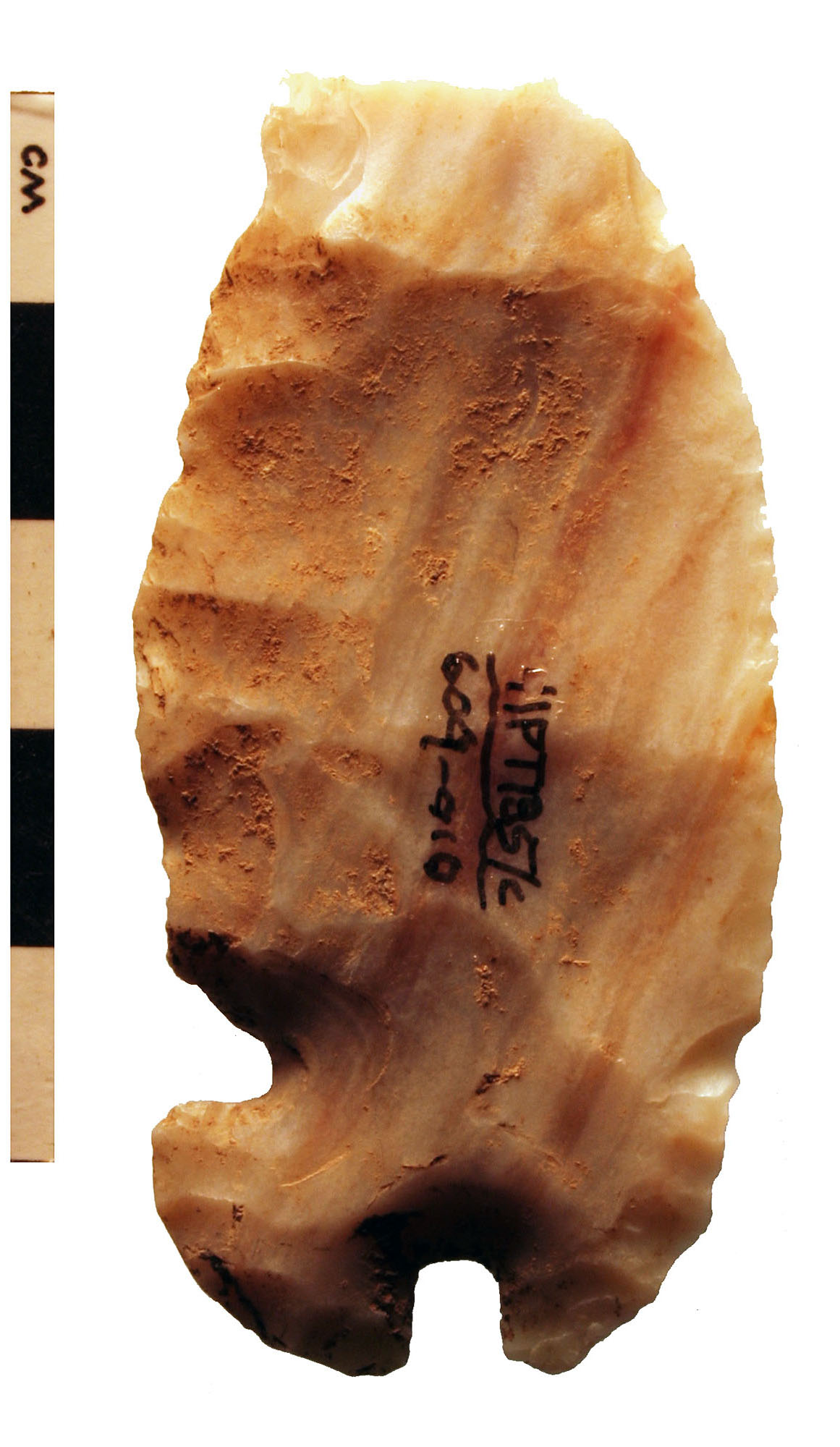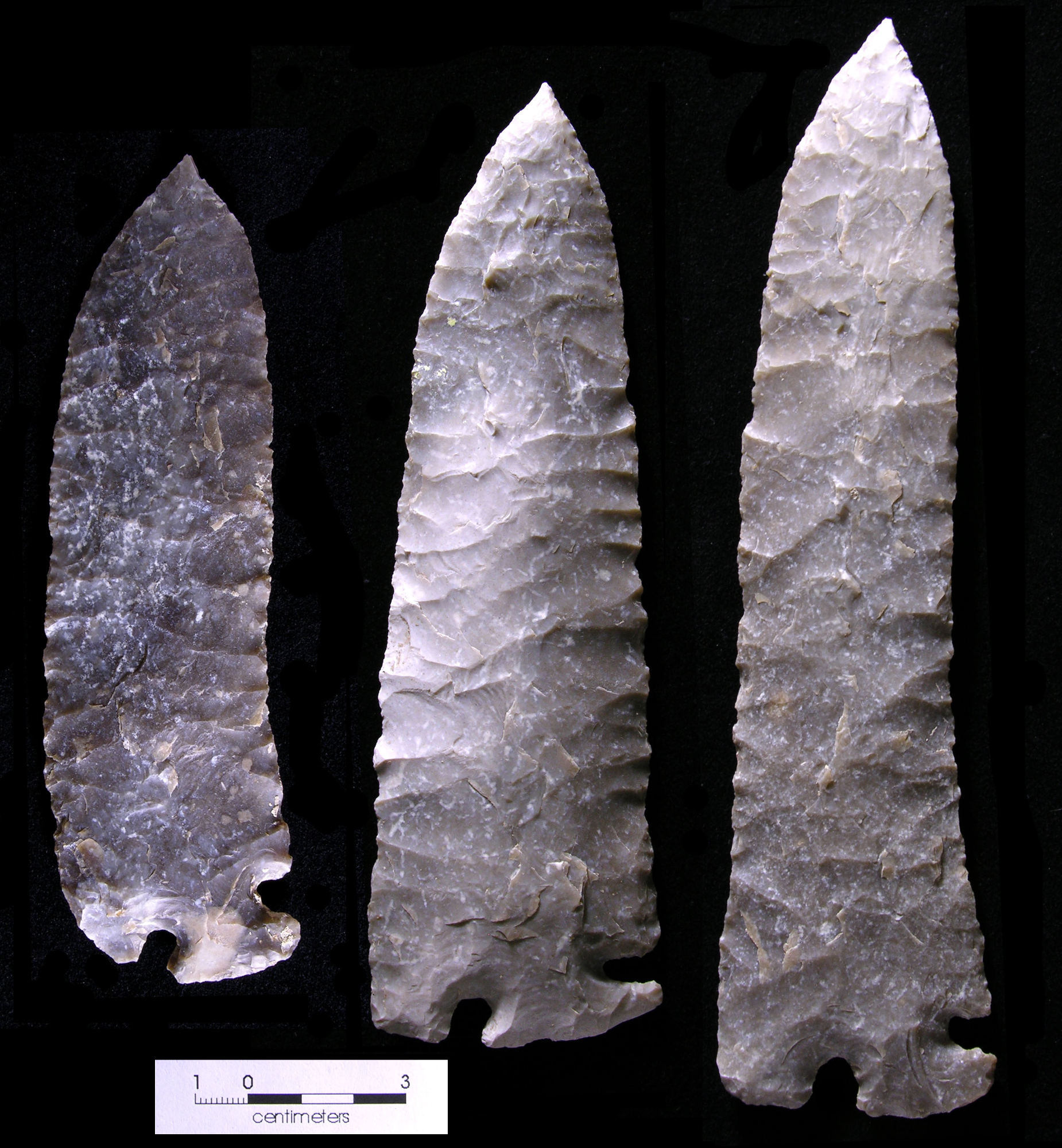
Object: corner-tang knife
Date: ca. 650 B.C.-450 A.D., Late Archaic
Context: Southeast Texas, Coastal Plains, Ernest Witte site
Over 1500 years ago, a Native American flintknapper selected a slab of high-quality stone measuring well over a foot in length and set to work reducing it, masterfully shaping the material into this unusually long, thin, curved bifacial knife. One of the flintknapper's final modifications was to notch the basal corner, creating a distinctive stem and tangs to which a handle could have been securely hafted. The artifact type—corner-tang knife (or biface)—is named for the unusual placement of the notch at the corner of the base. This knife was interred on a bluff above the Brazos River at the Ernest Witte site, a cemetery and habitation location. Based on use-wear analysis and contextual information, archaeologists have inferred that this object served a ritual or symbolic function—perhaps a tool to be used in the afterlife, rather than a mundane cutting implement for butchery or plant processing.

The grey stone from which the knife was made is from a chert (also called flint) source along the Balcones Escarpment near Georgetown, Texas. Georgetown flint is a fine-grained siliceous stone which occurs in the Edwards Limestone formation, where it can be found in bands or seams, and along rivers and streams where the weathered stone takes the form of flat nodules or rounded cobbles. Georgetown flint is glassy, translucent, brittle, and easily flaked, making it a highly desirable flintknapping material. Indeed, flaked stone tools made from Georgetown flint have been found at archaeological sites dating from at least 13,000 years ago and hundreds of miles distant from the source location.
The Ernest Witte site is located approximately 100 miles southeast of the Georgetown flint source. The site was excavated from 1974-1975 as part of the Allen's Creek project by the Texas Archeological Survey, of the University of Texas, and sponsored by the Houston Lighting and Power Company in anticipation of a never-built nuclear generating station. This Brazos River bluff location was occupied repeatedly by native groups during the Middle Archaic and Late Prehistoric periods; the knife was deposited in the Late Archaic period. It was one of two corner-tang knives, found together, at the site. The two knives were interred with a burial of a young adult female, along with shell pendants and shell beads.

These two Ernest Witte knives are among hundreds of corner-tang knives found in South and Central Texas, where the corner-tang form likely originated—a hypothesis supported by the relative density of corner-tangs in Central Texas and the observation that many of these tools are made from Central Texas chert (however, more rigorous tool stone source studies are needed to bolster this claim). That said, corner-tangs have also been found across the Great Plains and as distant as Wyoming made of tool stone obtained outside the Central Texas area.
The unusual proportions of this Ernest Witte corner-tang knife (28.8 cm long and 5.1 cm wide, with a thickness of less than one centimeter) attests to the skill of the knapper, the quality of the material, and arguably, the intended function of the object. Analysis of the knife by archaeologist Grant Hall, who directed the investigation of the Ernest Witte site, revealed that the unnotched corner of the base was ground. Grinding serves to dull the edge of the tool and prevent the hafting material (e.g., sinew) from being cut by sharp edges. Significantly, Hall also found that the knife appears to have been unused, at least as a cutting tool. This knife is one of a handful of large, curving, corner-tang knives with little or no observed use-wear that have been documented by archaeologists in the state (e.g., at the Silo site). Use-wear studies on smaller, more practically proportioned corner-tang bifaces (e.g., those found at the Pipeline site) have demonstrated that some of these smaller corner-tangs were used for utilitarian purposes such as processing plant and animals.

We do not know much about the relationship between the smaller corner-tang bifaces that clearly served as knives and their gargantuan, sickle-shaped cousins like the one from Ernest Witte site that appear to have been prized for their symbolic value. Both “functional” and “ritual” corner-tang bifaces were used 2,000-3,000 years ago during the Late Archaic period and most were made of Central Texas chert. Hall suggests that corner-tangs may have been a commodity traded between indigenous Central Texans and peoples of Plains and Woodlands cultures to the north and east. The symbolic meanings of these impressive, skillfully crafted knives continue to elude archaeologists.
Credits
Written by TBH Editorial Assistant Emily McCuistion, based in part on a TARL Blog piece by Susan Dial.
Print Sources
Broehm, Cory J., and Troy R. Lovata
2004 Five Corner Tang Bifaces from the Silo Site, 41KA102, a Late Archaic Mortuary Site in South Texas. Plains Anthropologist 49(189):59-77.
Dial, Susan
2015 A Masterpiece in Stone. Electronic resource, https://sites.utexas.edu/tarl/2015/03/17/a-masterpiece-in-stone/, accessed March 2, 2020.
Hall, Grant D.
1981 Allens Creek: A Study in the Cultural Prehistory of the Lower Brazos River Valley, Texas. Texas Archeological Survey Research Report No. 61, University of Texas at Austin.
Patternson, J.T.
1936 The Corner-Tang Flint Artifacts of Texas. University of Texas Bulletin No. 3618, Anthropological papers, 1(4).
Quigg, Michael J.
2011 Use-wear and Starch Residue Analyses on an In Situ Corner-Tang Knife from the Texas Panhandle: Towards an Understanding of Function. Plains Anthropologist 56(217):37-44.